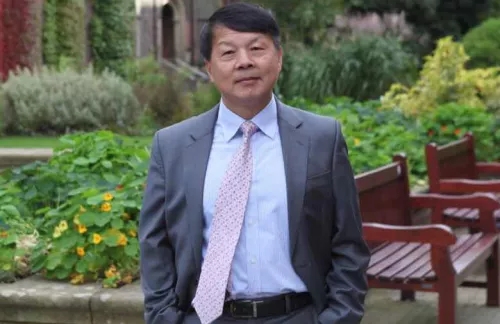Wang Huiyao: China, Japan should upgrade their bilateral investment agreement
September 26 , 2020By Wang Huiyao | President of the Center for China and Globalization(CCG)
On Friday, Chinese President Xi Jinping and Japanese Prime Minister Yoshihide Suga had a phone conversation during which the two leaders agreed that they should deepen their economic cooperation and deal with challenges posed by the pandemic.
Against the backdrop of a paralyzed WTO Appellate Body, China-U.S. frictions and growing anti-globalization sentiment, momentum has increasingly shifted towards regional and bilateral free trade agreements (FTAs). China and Japan should seize the opportunity and adjust their approach in deepening economic cooperation against this background.
At the moment, a free trade bloc of developed economies, led by the U.S., is gradually taking shape. The U.S. and Japan reached a trade agreement on tariff concessions in October 2019. CPTPP (Comprehensive and Progressive Agreement for Trans-Pacific Partnership) members such as Canada, Australia and New Zealand have expressed interest in joining the pact, raising the prospect of a giant trans-Pacific and transatlantic FTA involving more than 40 countries in Asia, Europe and North America.
To avoid being isolated by the U.S. in international trade, China must actively promote trade liberalization and globalization, integrate more deeply into international markets and forge closer economic ties with more countries.
In the context of warming ties between China and Japan, the two countries should launch negotiations on an upgraded bilateral investment agreement as soon as possible, as well as starting negotiations for a China-Japan FTA.
This would not only help promote China-Japan economic relations, but also boost progress towards the China-Japan-Korea trilateral FTA, accelerate regional economic development and open doors to China possibly joining the CPTPP.
As three major economies, China, Japan and South Korea have a total population of 1.6 billion, accounting for 70 percent of East Asia’s total, and a combined output of nearly 21 trillion U.S. dollars, accounting for nearly 90 percent of the region’s aggregate. The three countries are geographically close, culturally linked, economically complementary, and have great potential for cooperation.
In 2007, China, Japan and South Korea initiated negotiations on a trilateral investment agreement. The agreement was officially signed in May 2012. In November of the same year, the three countries formally launched negotiations on a China-Japan-South Korea FTA.
Currently, China is the largest trading partner of Japan and South Korea, and Japan and South Korea are China’s second and third largest trading partners respectively. At the eighth China–Japan–ROK Leaders’ Meeting held last year, the leaders of the three parties stated that they would work hard to achieve a free, fair, non-discriminatory, transparent, predictable and stable trade and investment environment and keep markets open.
If China, Japan and South Korea reach an FTA, it would become the world’s third-largest free trade area after the U.S.-Mexico-Canada Agreement (USMCA) and the European Union.
The current bilateral investment agreement between China and Japan came into effect in 1989 – relatively early. Although China and Japan have signed FTAs with many countries, due to external factors including the rigidity of the U.S.-Japan alliance, strategic suspicions of the U.S., and volatile relations between South Korea and Japan, China and Japan have not established a free trade mechanism.
China and South Korea have already forged an FTA and will start the second phase of negotiations to establish a new mechanism for China-South Korea economic cooperation, which is developing fast.
South Korea and Japan have held similar negotiations since the end of 2004, but the talks stalled as Japan was unwilling to reduce tariffs on agricultural products. The economic relationship between Japan and South Korea is relatively competitive and the two countries have often been at odds due to historical issues. Their bilateral relationship has been icy for more than a year, which is an obstacle to the advancement of the China-Japan-South Korea trilateral FTA.
Due to geographical proximity, China and Japan have close economic ties. In terms of bilateral investment, Japan is China’s third-largest source of foreign investment, and China is Japan’s second-largest destination for foreign investment. In 2019, 1,000 new Japanese companies were set up in China, an increase of 20.8 percent year-on-year. As of the end of 2019, Japan has invested 115.70 billion U.S. dollars in China, ranking first of all countries.
Despite the impact of the COVID-19 pandemic, bilateral trade between China and Japan in the first half of 2020 was close to 150 billion dollars. Japan’s investment in China was about two billion dollars, basically reaching the level of the same period last year. These resilient flows reflect the deep foundations and huge potential of China-Japan relations.
At present, the stability and improvement of China-Japan relations have also created good conditions for the upgrading of economic ties on both sides. In particular, Japanese businesses are optimistic about the potential of China-Japan free trade cooperation, and there are increasing calls for China and Japan to deepen their cooperation.
During the fight against COVID-19, China and Japan have supported each other to overcome difficulties amidst the difficult times. Despite some claims that Japanese companies will withdraw from China, according to Japan’s annual survey on Japanese investment in Asia (including the Chinese mainland) and joint ventures in April 2020, about 90 percent of Japanese companies in China have no plans to change their supply chains, or to only make adjustments within China if they do make changes.
Although President Xi Jinping’s visit to Japan was postponed due to the pandemic, warming relations between China and Japan have created good conditions for the upgrading and development of bilateral ties. In establishing an ongoing high-level dialogue with Japan to upgrade the investment agreement and forge an FTA, China can also play a mediating role in trade negotiations with Japan and South Korea.
At a time when globalization faces significant headwinds, there is great potential for cooperation between China and Japan as friendly neighbors. Mutual assistance amidst the pandemic has shown that China-Japan relations can withstand hardships. By working together, the two sides can move on from the past and bring peace and prosperity to both nations.
Topical News See more






